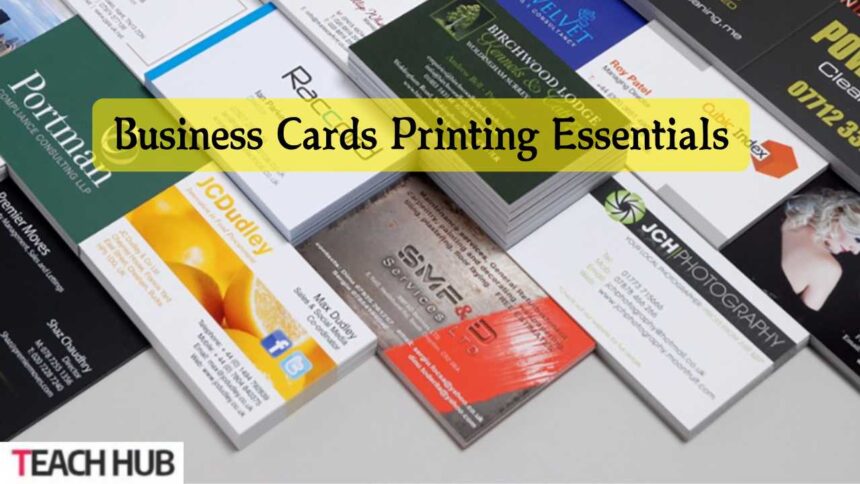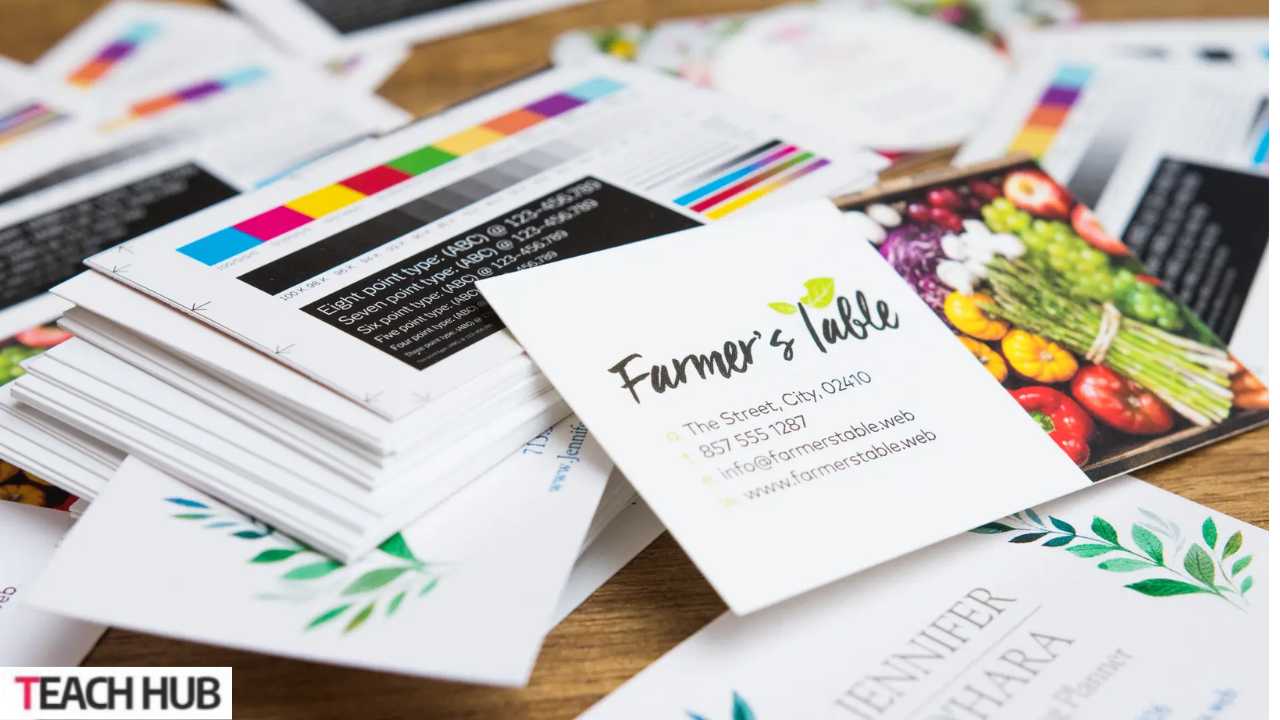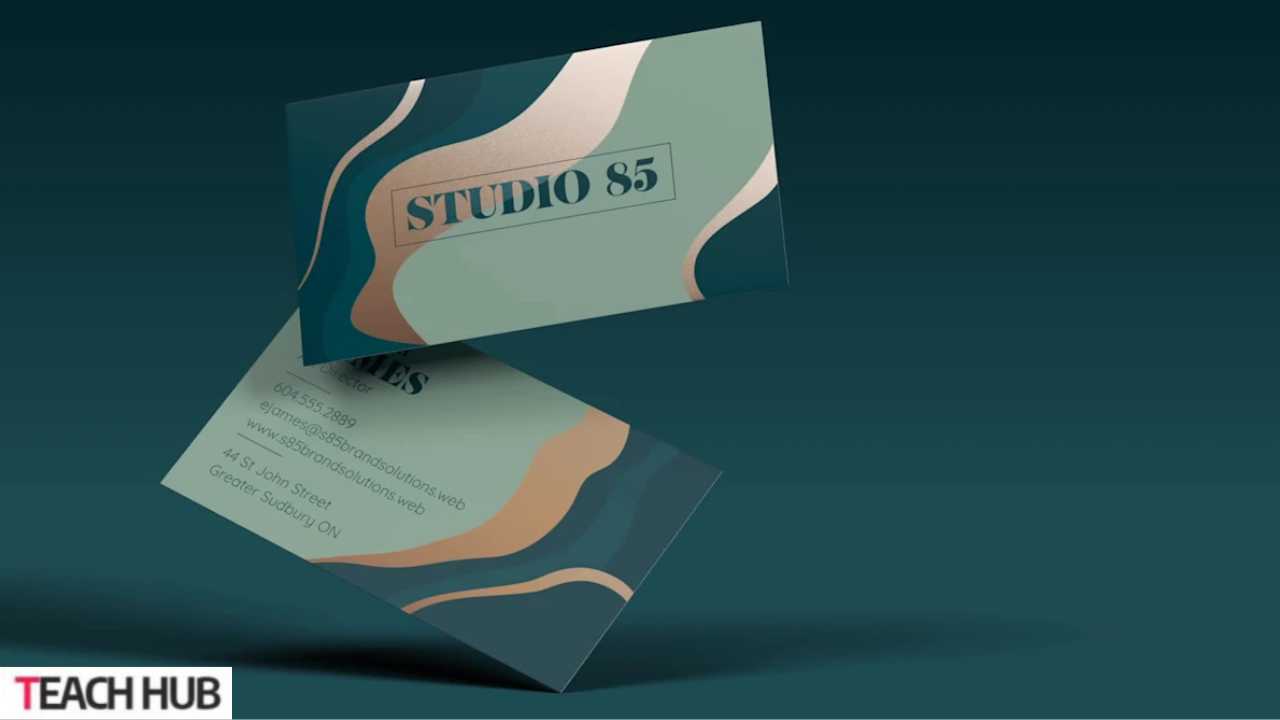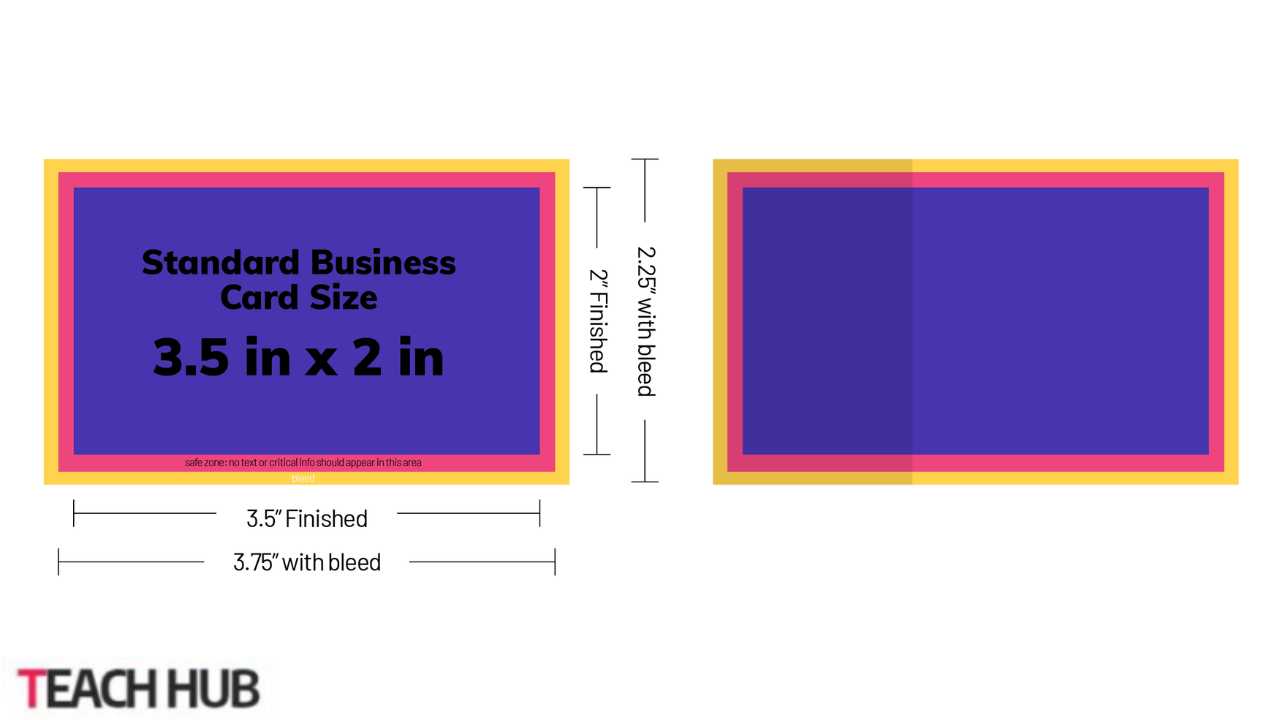In a world where a lot is spent on emails, social media, and whatever online communication exists, business cards are generally a less essential part of business practice. Still, I’ve found that even little scraps of cardstock can create good impressions and connect people on a person-to-person level. Now more than ever, when virtual means often circumvent the tangible, business cards are essential in helping professionals differentially establish real connections.
Mastering the art of business cards printing is more than just a list of contact information. With the proper emphasis on design, quality, and efficient printing techniques, the cards represent our brand and make a lasting impression.
For those who don’t know how a simple card can boost your professional image, join me on the journey through business card printing, where we’ll discuss some tips and tricks to create the perfect card.
Select the Right Design for Your Business Card
The design of your business card is a visual expression of your brand, which can affect its impression of being perceived rightly or otherwise. Start by choosing a template for your business card print that looks similar to the aesthetic of your business; it should be consistent with other marketing materials.
Pay particular attention to the layover: do not allow too much information to be hidden. A clean and balanced text, imagery, and white space arrangement should be achieved. Consider what colors and fonts you employ that best capture your brand’s personality, whether professional, playful, or innovative.
Additionally, researching the cultural associations of colors and patterns can avoid unintended implications. Taking time to draw means you will spend adequate time designing a business card to ensure that it attracts attention and exudes a professional look.
Color in Business Cards Printing
Color also plays a crucial role in business card printing; both have aesthetic and psychological effects. A well-chosen color scheme can evoke emotions and reinforce brand recognition. Start by defining brand colors, which will then be inserted into your card design to maintain alignment with your overall branding approach.
Most clients associate trust and reliability with blue or green colors, while passion and energy are created through red color usage. However, balance must be achieved; too many colors are overwhelming, while too few leave the design dull.
Consider the printing process; for some, vivid colors are not printed accurately in some types. Through creative use of color, you will have a dramatic effect on your card, letting it remain an image that is never forgotten.
Make Your Business Card Readable and Charming
Typography is one of the most critical aspects of business card design. It determines the readability and the overall look of your card. Use fonts that go with the tone of your brand and read clearly in different sizes. Mixing fonts is visually attractive, but don’t overdo it-think through a plan or stick with one or two.
Remember the size: The text should be large enough to be readable but not so large that it overpowers the design. Use bold or italic styles to highlight essential information, such as your name, title, or company.
Choosing and styling typography judiciously will help you to create a fashionable, professional business card that effectively presents the most essential information.
Integrating Logos and Graphics in Business Cards
A logo forms a vital element of your business card, as it is a visual anchor to your brand. Ensure your logo is in center position and size so that it’s easily seen. Where you use any additional graphics, ensure they are kept simple so as not to detract from providing necessary information.
Graphics should always look like they enhance the design rather than be used to overcome it. High-resolution images are vital, as these will be clean and professional, particularly when printing. Some graphic components are icons or textures within your background and related to your industry.
Thoughtfully interwoven logos and graphics can drive your business card as an effective tool for branding and communication.
Printing Options for Business Cards
Whether you will use a DIY or a professional service to print your business card depends on how much you need and can afford. When using DIY services, you control the process and can easily print when and how much you need. However, the quality may be different from that of professional printing.
Professional services like business card printing Vistaprint, or Staples can offer various products and finishes, and professional design can help create a finished product that will look professional. They also do large print runs efficiently, so quality will always be consistent.
Consider the options of tools and resources you have at your disposal and weigh out the quality versus the cost to best suit your business card printing needs.
Vista Print Business Cards
Vista Print Business Cards should be noted when examining business card printing benefits because its website is entirely user-friendly and offers a combination of personalization opportunities. If you see a template you want, you can utilize it, or you can upload your design and use it.
Paper stocks vary, and finishes and more advanced options, such as embossing or foil accents, make the cards produced stand out. Their web design application is user-friendly, making it possible for non-doers to produce A-one cards.
Vistaprint also hosts regular promotions, which cut down the costs of mass purchases. If you want quality at bargain prices, business card printing vistaprint can give you a sound business card printing service that guarantees cards with true brand identity.
Staple Business Card Printing
Staples is an efficient business card printing option, offering both in-store and online opportunities to print. The design process is easy: you can choose from many templates or customize them to your company’s needs. They have varied paper options and finishes to ensure you select the right match for your business image.
One benefit of utilizing Staples is the fast turnaround time, which seems beneficial if the demand is urgent. A promise of quality assurance assures that your cards will be professional. With the convenience of local pickup and competitive pricing, Staples is a reliable source for those who want to print business cards efficiently and effectively.
How to Effectively Use Business Card Print Templates?
This simplifies your card design while giving you a structured framework to create your card. First, choose a template that best suits your brand’s aesthetic and message. Insert your logo and brand colors followed by the necessary contact information, and, more importantly, pay attention to the layout so you stay calm with the template’s design details.
Templates should also be compatible with your intended printing service to avoid formatting issues. Effectively applying print templates to any business saves time while ensuring a professional appearance, allowing you to spend more time networking and less time on design complexities.
Advanced Printing Techniques for Business Cards
If you want to make them remember you, use the advanced printing techniques with class on your business cards. Techniques such as embossing or debossing can create a tactile experience using raised or imprinted parts on the card. Metallic sheen foil stamping can create a luxurious look that appeals to many eyes.
Spot UV coating can define the areas by creating glossy parts while making others matte. These techniques may be a bit more costly, but they can also contribute significantly to giving your cards a value appeal to many of these advanced features; the business cards are beautiful to look at and discuss professionalism and attentiveness.
Eco-Friendly Business Card Printing Options
With the world becoming more sensitive to environmental concerns, eco-friendly business card printing is in increased demand. You can go green without compromising quality by using recycled paper stock and soy-based inks that avoid hazardous chemicals involved in the printing process.
Some vendors provide biodegradable papers that will make your cards highly sustainable. Digital printing tends to produce less scrap than offset printing.
With this environmentally friendly product, you can assure your clients that you care for the future environment. Such intentions show that you are responsible in a socially conscious yet professional manner.
Impact of Size and Shape on Business Cards
While most business card sizes are 3.5 x 2 inches, recreating them with various forms and sizes could make your card stand out. Interesting shapes like circles, squares, or feathers catch their eyes and provoke curiosity. However, do not forget to consider usability: business cards that fit into the standard wallet and business card holders are more likely to be kept.
Adding custom shapes also adds a little bit to your printing expense. While selecting a standout design, ensure the design reveals your brand identity but not at the cost of readability for the vital information. Thoughtfully designed sizes and shapes can make your business card a great conversation piece.
Important Information to Present on Your Business Card
The content is as crucial as the creation of your business card. It should contain essential data, including your full name, job title, business name, phone number, and email address. Adding your company’s website and relevant social media handles can facilitate connectivity.
Just ensure the information is contemporary and easily readable without cluttering the card. Including a meaningful tagline or a QR code leading to your online portfolio will add value and be professional.
Remember, more is less; a great business card communicates everything you need to share with whoever needs that information so they can contact you or know more about your business.
Proofread Very Carefully Before Your Business Card Printing
Proofreading is the last and essential stage in any business card printing process and should always be addressed. Errors, no matter how minor, harm an individual’s experienced image and credibility. Check the text carefully for typos, incorrect information, and formatting issues.
When finalizing the print order, have someone else review your card- this ensures you catch any last-minute typos or formatting errors. Checking consistency in font style and size regarding text and design elements and ensuring everything is aligned correctly will pay dividends in good proofreading techniques that avoid mistakes and the cost and hassle of reprinting your business cards to ensure your business communicates a polished brand image.
Distributing Your Business Cards Effectively
Once you have had your business cards printed, effective distribution will maximize their impact. Keep a stack handy with you at all times, and hand them out at networking events, conferences, or completely random encounters.
Please leave them in strategic locations usually populated by your target audience, like local businesses or community centers. Leverage digital channels by attaching a business card within the packaging of shipments for orders fulfilled online or sending some with thank-you notes to the customers.
Again, the idea is to increase your sphere of influence and thereby increase brand visibility. In distributing these strategically,
Conclusion
Reviewing our considerations for printing business cards, it is apparent that those small yet effective tools remain essential in personal branding and networking. However, the digital age has carved out a new domain for itself. Still, a well-designed business card leaves that tangible impression that cannot be easily replicated by its digital counterparts.
Professional printing services like Vistaprint and Staples offer expertise and quality that can transform your business cards to reflect your brand’s personality. Color, typography, and innovative printing techniques like embossing or foil stamping can add depth to your card.
However, embracing such strategies will create business cards that attract attention and deepen the professional image you have built. Moving forward, let these insights help you make business cards that reflect the true essence of your brand and open doors to new opportunities.
Also, Read More: All Types of Business Cards
(FAQs)
Why are business cards still crucial in a digital age?
Business cards are essential because they create a physical connection in a world where the rest of life is highly virtual. Such a business card will give networking a rather personal dimension, making the meeting more accessible and easier to remember in a face-to-face encounter. Good design also helps augment the brand’s professional image, making it a memorable tool for personal branding.
Things to consider in making a business card
When creating your business card, you must be mindful of the elements that make your brand’s identity, color schemes, typography, and the logo’s position. It must be readable. Your name, job title, and contact information should also have room on this card. Make it clean but professional simultaneously to let your creativity show while remaining readable.
Where to print business cards?
You can go for DIY printing and then have control and flexibility, making small batches. Or you can go for professional services like Vistaprint and Staples, which give you quality and polished results. Professional services are also good because they give you many options with different materials and finishes according to your brand’s needs.
How do I make my business card stand out?
Use advanced printing techniques, such as embossing, foil stamping, unique shapes, and quality materials, to make your card stand out. Design a fascinating one that expresses your brand well. Consider introducing QR codes to give it a touch of modernity and connect it to your online portfolio or website.
Are Business cards eco-friendly or not?
Yes, green business cards are an ideal option for a conscious professional who is also concerned about the environment. To reduce environmental impact, use recycled paper, paper bi, biodegradable materials, and soy-based inks. Consider digital printing, which will reduce waste and reflect a sense of commitment to sustainability without sacrificing quality.






